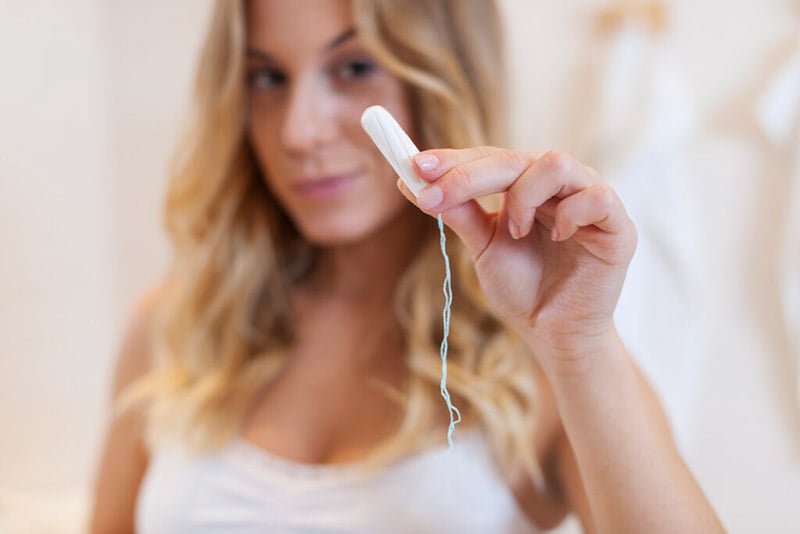Vaginal Yeast Infection
While a vaginal yeast infection is common, it isn’t pleasant for the sufferer, so it helps to know exactly what to do when you encounter symptoms. There is also the chance of prolonged infection and recurrence if you have an untreated vaginal yeast infection. In this article, you will find everything you need to know about the condition, from the causes to the signs of vaginal yeast infection.
We will take you through the following:
- What is a Vaginal Yeast Infection?
- What Are the Symptoms of a Vaginal Yeast Infection?
- What Causes Yeast Infections?
- Diagnosing Vaginal Yeast Infection
- Vaginal Yeast Infection Treatment
- Vaginal Yeast Infection Prevention
- When to See a Doctor
- What is Bacterial Vaginosis?
- FAQs
What is a Vaginal Yeast Infection?
A vaginal yeast infection is a fungal infection that targets the vaginal area and vulva, causing itching, abnormal discharge, redness, and soreness. Many women feel embarrassed about this condition, but it is extremely common, with most women experiencing it at least once in their lives. It is also usually easily treated with antifungal medications.

What Are the Main Symptoms of a Vaginal Yeast Infection?
Vaginal yeast infection symptoms are anything but pleasant, causing discomfort, itchiness, and pain around the vagina and vulva. You might also feel the symptoms of yeast infection inside the vagina.
Below are the most common symptoms:
Itchiness
The itching can range from mild to severe and is usually felt around the vulva and in the opening of the vagina.
Redness, Swelling, and Soreness
In some cases, you may encounter redness and swelling around your vagina and vulva, causing discomfort.
Vaginal Rash
It’s common for some people to get yeast infection sores vaginal around their vulva area. These small bumps may feel itchy and sore.
Thick, Clumpy Discharge (may look like cottage cheese)
Yeast infection discharge often looks thick and clumpy, almost like cottage cheese. It may have a subtle scent, too – sometimes, people encounter yeasty smelling discharge.
Burning During Urination
It is common to feel yeast infection burning during urination.
Yellow or Green Discharge
White-yellow discharge is often normal. Yellow discharge yeast infection looks a little darker and can even appear green. With a yeast infection, green discharge can be quite alarming – visit your doctor if you’re concerned about symptoms.
Watery Discharge
Watery discharge yeast infection is also common. It may have a slightly unpleasant odour along with it, too. It can be handy to look at vaginal yeast infection pictures to see external vaginal yeast infection signs.
What Causes Yeast Infections?
A healthy vagina contains the right balance of yeast and bacteria. When that is thrown off balance, an overgrowth of yeast can occur, causing a yeast infection.
Some of the most common vaginal yeast infection causes include:
- Wiping back to Front After the Toilet
- Douching
- Improper Hygiene
- Using Scented Products
Certain factors can put women at a higher risk of getting a yeast infection than others, including:
- Birth Control
- Antibiotics
- Pregnancy
- A Weakened Immune System
- High Estrogen Levels
- Diabetes
It’s important to remember that you might get a yeast infection from antibiotics or birth control, as it’s something you may want to talk about with your doctor.
Diagnosing Vaginal Yeast Infection
If you believe that you have a vaginal yeast infection, it is a good idea to go to the doctor to know for certain – especially if it’s your first time getting one.
There, you can expect the doctor to perform a pelvic exam to take a sample of your discharge. Afterwards, it will be taken to a lab for testing to determine whether or not a yeast infection is causing your symptoms.
Vaginal Yeast Infection Treatment
The treatment for a vaginal yeast infection is usually quite simple. You can use an antifungal cream like Gyno Pevaryl to clear up the infection. There is also the option of oral medications that you can get prescribed by your doctor. Make sure you take your medication for the full duration.
It’s important to remember that the fastest and most effective way to treat a vaginal yeast infection is with an antifungal cream – no home remedies come close.
Vaginal Yeast Infection Prevention
Whether you get regular yeast infections or you have never had one, you likely want to know how to prevent them. Here are the best ways to avoid getting a vaginal yeast infection:
- Avoid douches
- Wear comfortable and loose clothing
- Don’t take hot baths
- Change pads and tampons regularly
- Wipe front to back
- Look out for the signs
Knowing what is and isn’t a yeast infection can really help. You might think you have a yeast infection because of brown discharge, but yeast infections more commonly produce yellow or green discharge – brown discharge is often nothing to worry about.
By knowing the symptoms, you will have an easier time treating the problem.

When to See a Doctor
You are usually safe treating a yeast infection from home with an antifungal cream like Gyno Pevaryl Topical Cream. There are times when you should see a doctor, though.
If you have a severe yeast infection, it keeps coming back, or you are either pregnant or diabetic, it’s a good idea to see the doctor. There, they can perform a pelvic exam and vaginal yeast infection test to determine what’s going on down there.
By going to the doctor, you have a better chance of clearing the infection up for good without it getting any worse.
What is Bacterial Vaginosis?
Bacterial Vaginosis is an inflammation of the vagina that causes unpleasant symptoms like a fishy odour and burning during urination. Due to the similarity in symptoms, many women confuse BV for a yeast infection (and vice versa).
Vaginal Yeast Infection Vs Bacterial Vaginosis
A vaginal yeast infection is caused by an overgrowth of yeast, whereas BV is caused by an overgrowth of bacteria. While some symptoms are similar, there are also differences. For example, yeast infections often produce yellow and clumpy discharge, whereas BV discharge is usually watery and has a foul, fishy-like odour.
Symptoms of Bacterial Vaginosis
- Fishy-smelling discharge
- Itching
- Thin, grey discharge
- Burning during urination
- Soreness
How to Treat Bacterial Vaginosis
Unlike a yeast infection, you can’t treat BV with over-the-counter medication. You must visit your doctor, where they will prescribe you a round of antibiotics.
You might wonder if BV can go away on its own. While in some cases it can, there is also the risk of BV getting worse if left untreated. Therefore, it is always better to see your doctor if you have symptoms of bacterial vaginosis.
Preventing Bacterial Vaginosis
You are more at risk of BV if you have frequent unprotected sex and douche. To prevent it, you should practice safe sex and avoid douching altogether. Your vagina is self-cleaning, and douching doesn’t make you any cleaner – it only puts you at risk of infection. Cleaning the vulva with an unscented soap each day is enough.
It’s a good idea to wear breathable cotton underwear and to avoid scented products around your vagina. This will help keep your vagina’s pH balance healthy, preventing an overgrowth of bacteria.
Frequently asked questions
Why Do I Keep Getting Bacterial Vaginosis?
Some people experience recurrent BV. That could be due to your lifestyle habits, such as frequent sex or certain hygiene habits like douching. There is also the chance that you are resistant to antibiotics, and the treatment cannot clear it up fully. Other times, there is no known reason – some women seem to get recurrent BV with no known cause.
If bacterial vaginosis keeps coming back, the best thing to do is to talk to your doctor.
How to Prevent Bacterial Vaginosis
You should practice safe sex and avoid douching altogether if you want to do everything you can to prevent BV.
Can Bacterial Vaginosis Go Away On Its Own
Sometimes, it can. However,as there is also the risk of BV getting worse if left untreated, you should also seek out professional medical advice and treatment.
How to Get Rid of Bacterial Vaginosis
You must visit your doctor and let them prescribe you a round of antibiotics.
How do you Know Whether You Have a Yeast Infection
You should look out for the following symptoms: itchiness, redness, swelling, soreness, a vaginal rash and thick, clumpy discharge. You may have burning during urination, yellow or green discharge or even watery discharge. These are all signs you may have a yeast infection.
What Does a Vaginal Yeast Infection Look Like?
A vaginal yeast infection often looks red, swollen, and with thick, clumpy discharge. Sometimes, there will be a creamy coating around the vulva and entrance to the vagina. Some women also get vaginal yeast infection bumps around their vulva. If you are unsure if what you’re currently experiencing is a yeast infection, it’s best to get checked at the doctor.
Will My Yeast Infection Go Away on its Own?
A yeast infection can go away on its own, but there is always the chance of it getting worse without treatment. Remember that you can easily treat a vaginal yeast infection at home with a cream, such as Gyno Pevadryl.
What is the fastest way to get rid of a yeast infection?
The fastest way to try to get rid of a yeast infection once you have noted the symptoms and had confirmation is to use an over-the-counter yeast infection cream like Gyno Pevadryl.
When is White Cottage Cheese Discharge Not a Yeast Infection?
White cottage cheese discharge is often a sign of a yeast infection. However, some STDs produce similar symptoms – white and yellow discharge is a symptom of chlamydia, while white and green discharge may mean you have gonorrhoea.
It is unusual for those conditions to produce cottage cheese discharge, however. If you are unsure about what’s going on down there, you should see your doctor for a test.
Is there a Link Between Vaginal Yeast Infection and Sore Throat?
You can get a yeast infection in your throat as well as in your vagina. The symptoms include white raised lesions inside your mouth, pain, and redness. If you suspect you have a throat yeast infection, see your doctor.
Can You Have Sex with a Yeast Infection?
Having sex with a yeast infection is doable, but you might want to wait for the infection to clear up. With a yeast infection, vaginal dryness may get in the way, and you might feel uncomfortable due to the soreness and burning.
It’s also important to note that, while a yeast infection is not considered an STI, there are occurrences where you can pass it on from person to person. In general, vaginal yeast infection sex is best avoided until it is fully cleared up.






